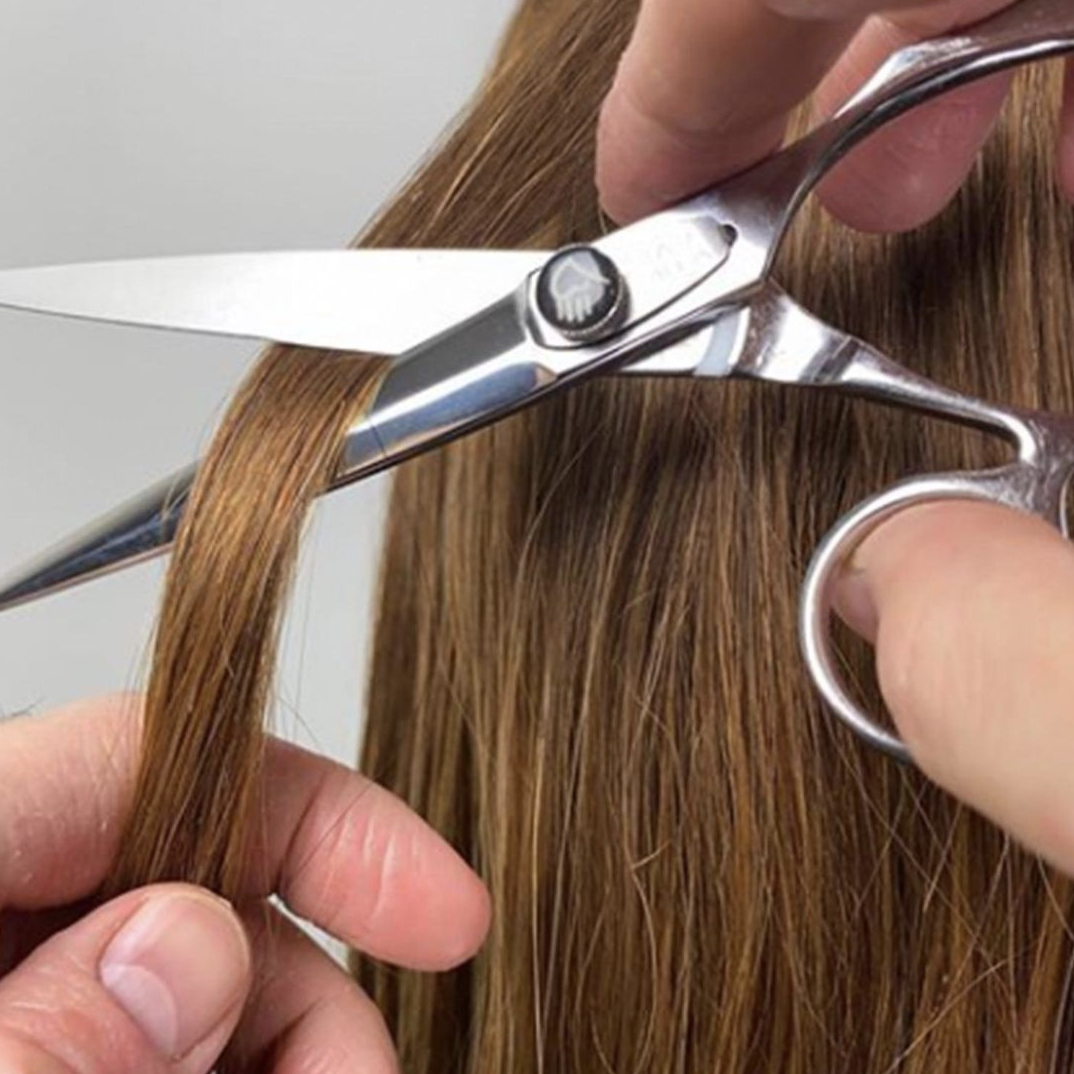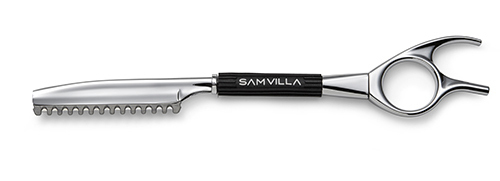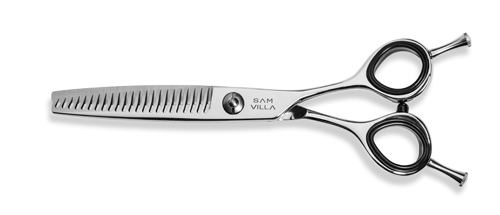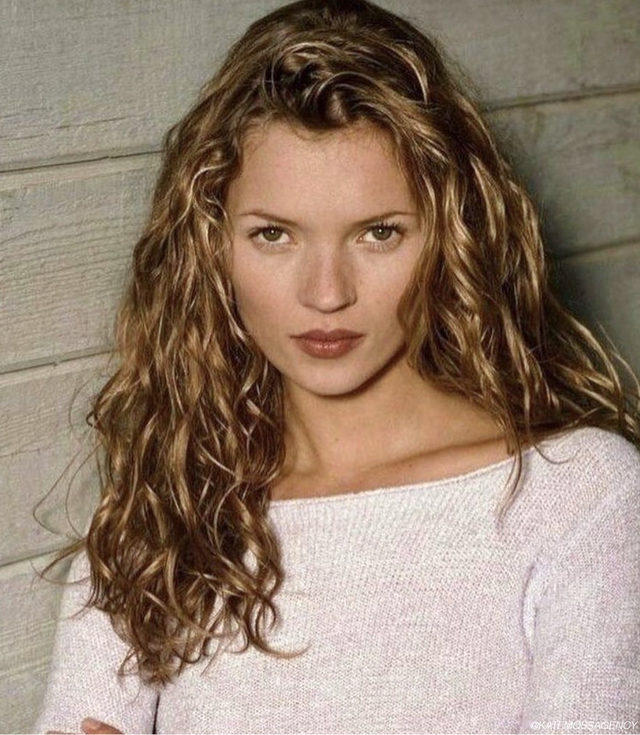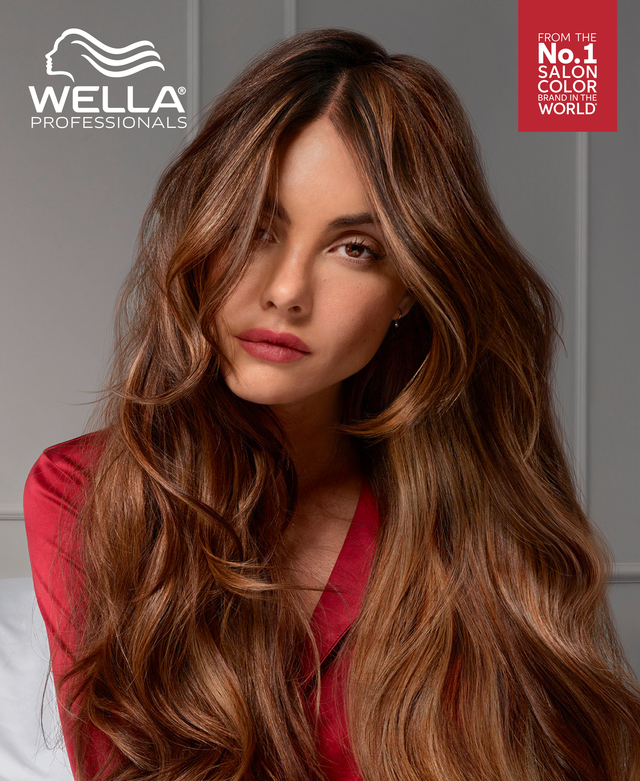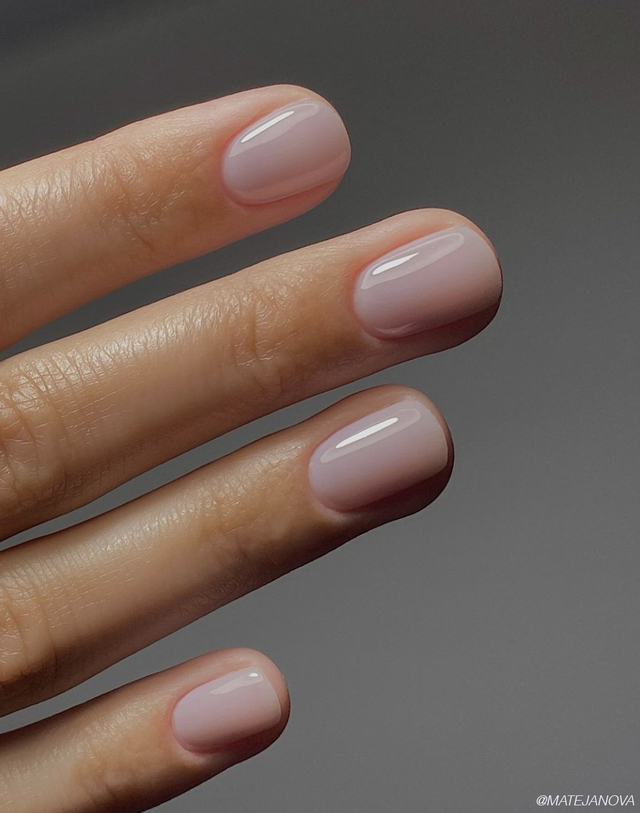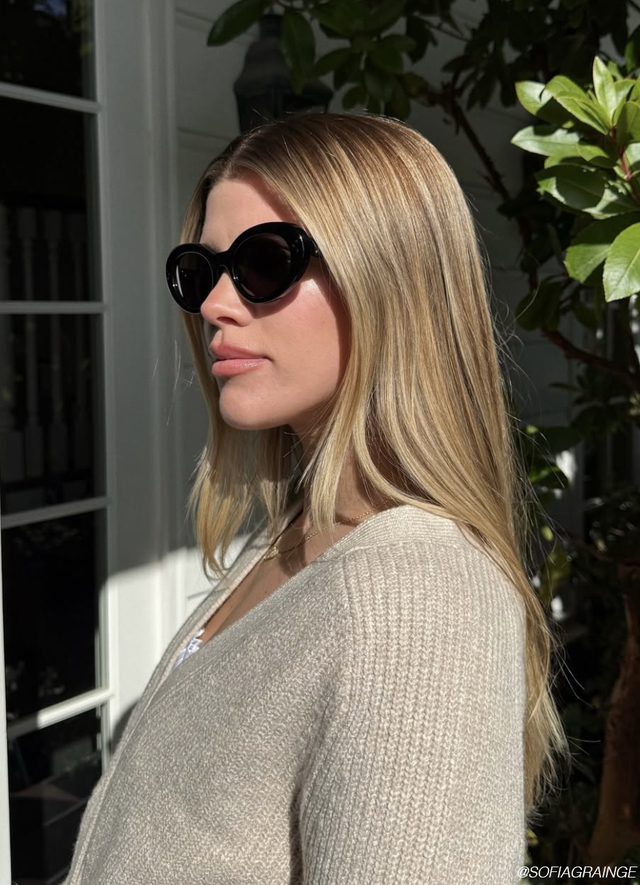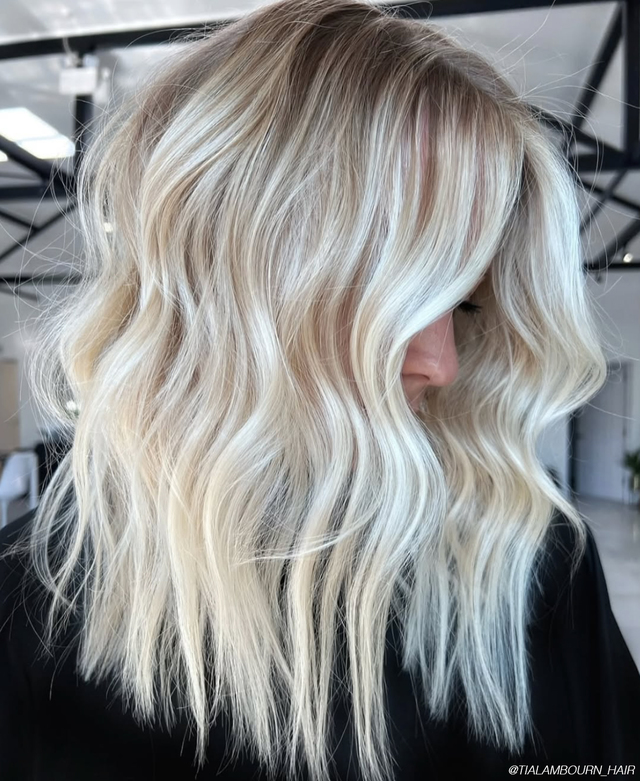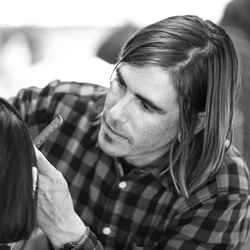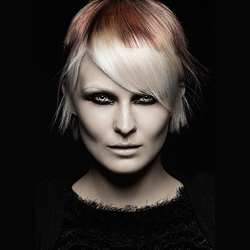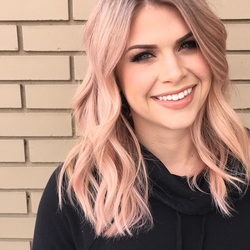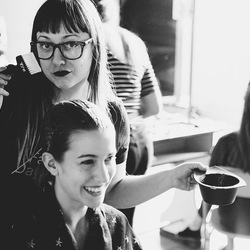Texturizing techniques are a staple for any stylist. It’s the little details that take a look from great to amazing with a few strategic cuts. Clients love when we give them that one on one focus creating a look that they can easily recreate at home. From notched scissors to razors and point cutting to stroke cutting, texturizing techniques are the best way to personalize a cut, color, or style while making your work look flawless.
Extensions
Extensions are their own special category of the hairstyling world. Not all hairdressers do them and some that do are not always trained in cutting and coloring techniques. While most extensions placed in a professional salon are made from human hair, they can't necessarily be treated like a client’s natural hair. Hair extensions are best cut dry after being washed once. This way the chemical coating is removed and they begin to take on their true form. A combination of point cutting and stroke cutting is best in order to organically blend the extensions to the client’s natural hair. For more temporary extensions us a conservative approach since the client will likely slightly shift their position with each use, you can always cut more.
Short Cuts
A common misconception with short hair is that it doesn’t need texturizing when actually it can take a cut from basic to bold in a few little tweaks. Razors help provide a feathery texture to short cuts that give them a trendy lived-in quality from day one. Texturizing shears also help to give a flawless blend to any fades or short pixies. Slide cutting for the crown and front hairline can help push hair into the direction where it should live so that your client can achieve their wash-and-go dreams. Always consider a client’s natural texture and any growth patterns, avoid over texturizing near cowlicks or whirls, and check for the balance in the mirror for a better perspective.
Transitions
Whether your client is moving from pixie to bob or bob to shag, texturizing techniques will keep their hair looking fresh and on-trend during every phase, even when growing out bangs. Hair is meant to move and what better way than to give it a helping hand with some highs and lows. Consider your client’s styling habits and aim for texturizing techniques that support them. If your client tends to wear their hair curly (natural or enhanced) focus your dimension on the mid-lengths and ends avoiding creating short pieces that will separate and stick out. For straighter sleeker looks texturize the ends for a blunt but lived-in line and the hairline for soft face-framing.
Try out these texturizing tools from Sam Villa to maximize your personalization potential:
Signature Series Single Razor
